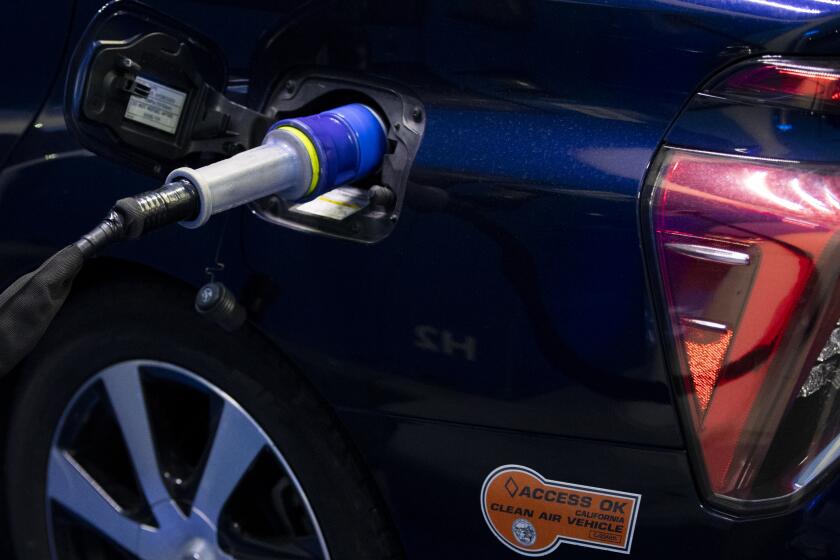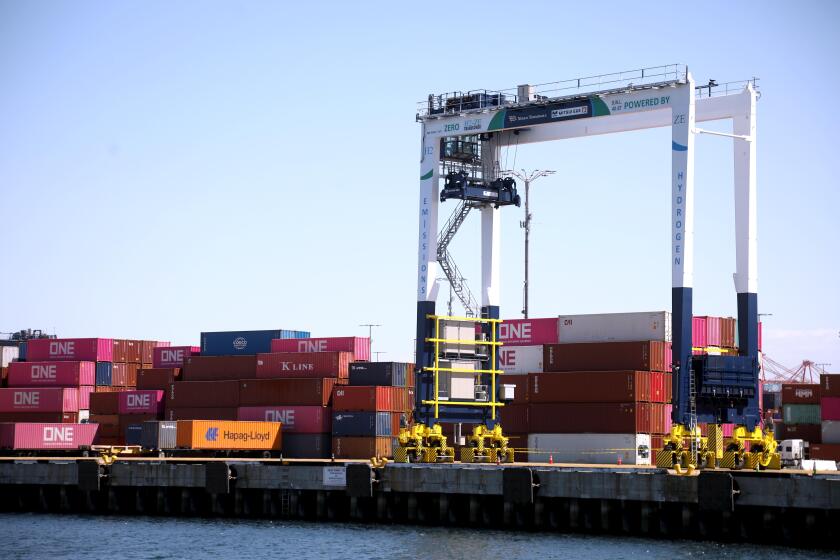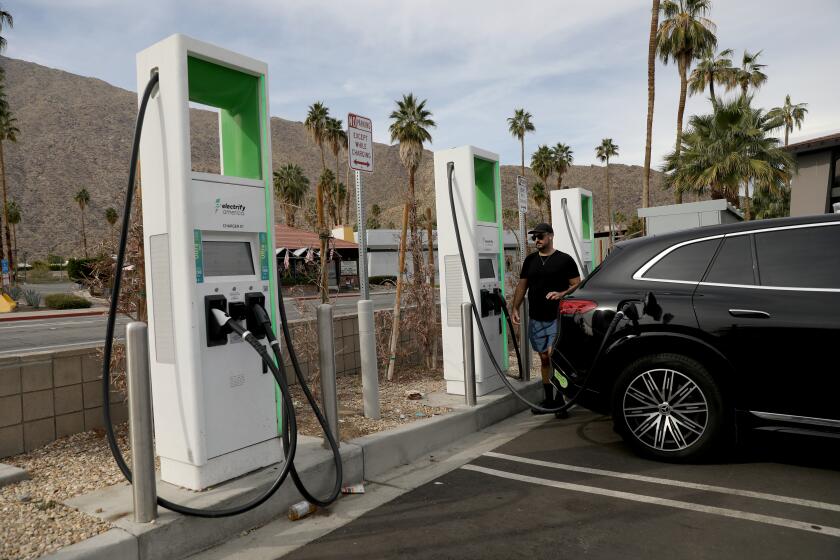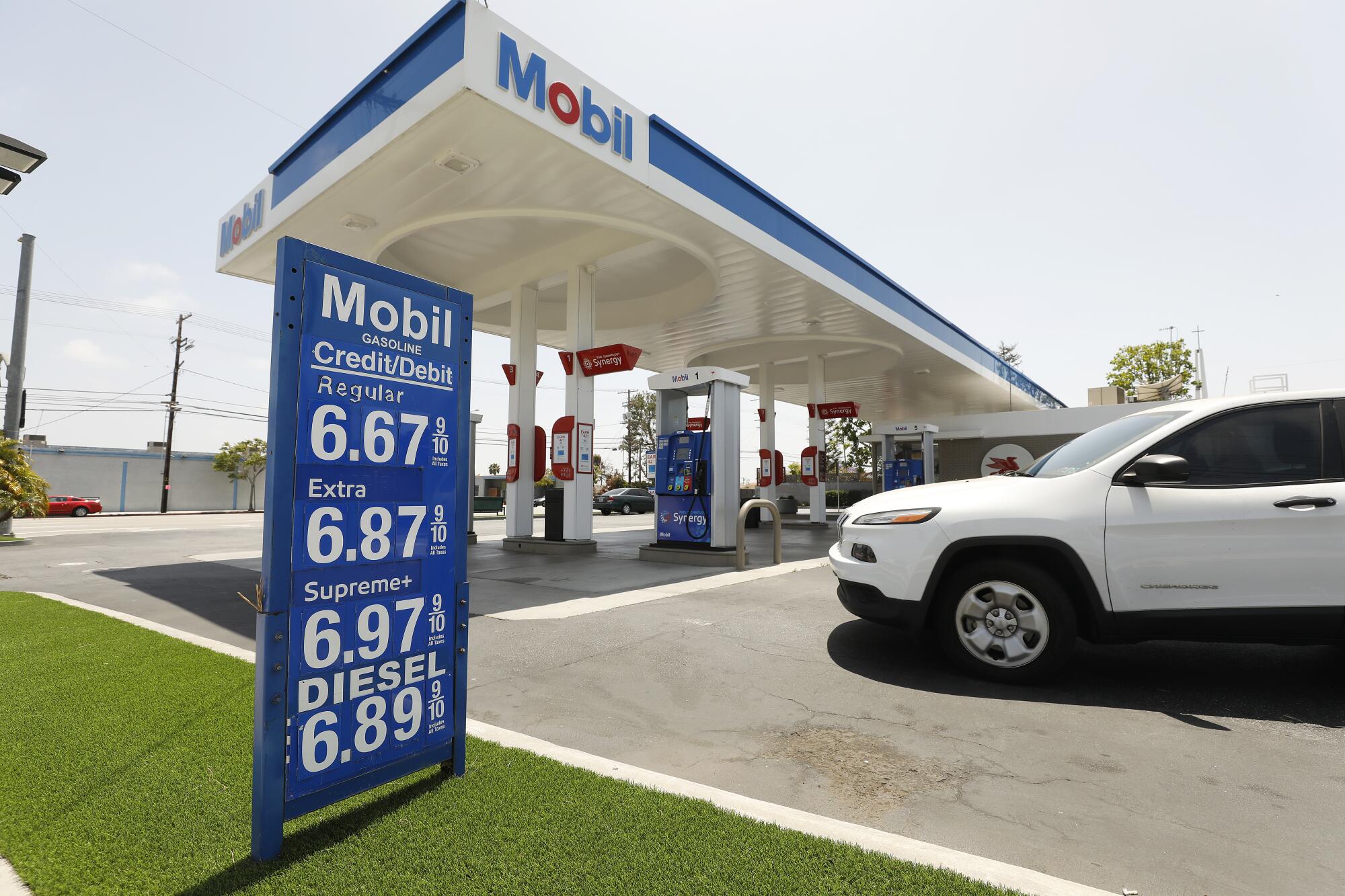
- Share via
If you drive a car or pickup truck in California, you care about the price of gasoline — especially if it spikes toward $7 a gallon, as it did in September 2022.
Perhaps you’ve heard that Gov. Gavin Newsom has called a special session of the Legislature to consider a law meant to prevent such price spikes. It would allow the state to mandate minimum supplies of gasoline be stored at California-based refineries. The special session starts with hearings this week on a bill to pave the way for the reserve. Here’s a primer on the issue:
What is the Newsom plan?
If the Legislature passes the minimum inventory bill, refineries in California could be required to keep extra gasoline on hand, so when a refinery shuts down for planned maintenance or an unplanned problem, prices at the pump won’t spike. That’s the theory anyway. The California Energy Commission would be charged with deciding whether a reserve should be created and how big it must be.
Dozens of Californians are part of a class action lawsuit filed in July against Toyota. They claim the carmaker’s salespeople misled them about the state’s unreliable hydrogen refueling infrastructure.
Where would this gasoline be stored?
It depends on how big a cushion the state might mandate. Spare capacity in existing storage tanks might suffice. Additional storage tanks might need to be built, according to the industry, and they might run about $35 million a tank. The state’s recently created Division of Petroleum Market Oversight reports that California refineries typically keep 15 days or more supply on hand, which tends to shrink by several days when a refinery shuts down for maintenance.
Who would pay the costs of a gasoline reserve?
The refinery companies.
How much?
Yet to be determined.
Won’t those costs be passed along to consumers?
Most likely, although they’d be more evenly spread throughout the year. How much money, and how it would compare to temporary price spikes, can’t be estimated until the state decides how big the gasoline reserve would be and how it would be managed.
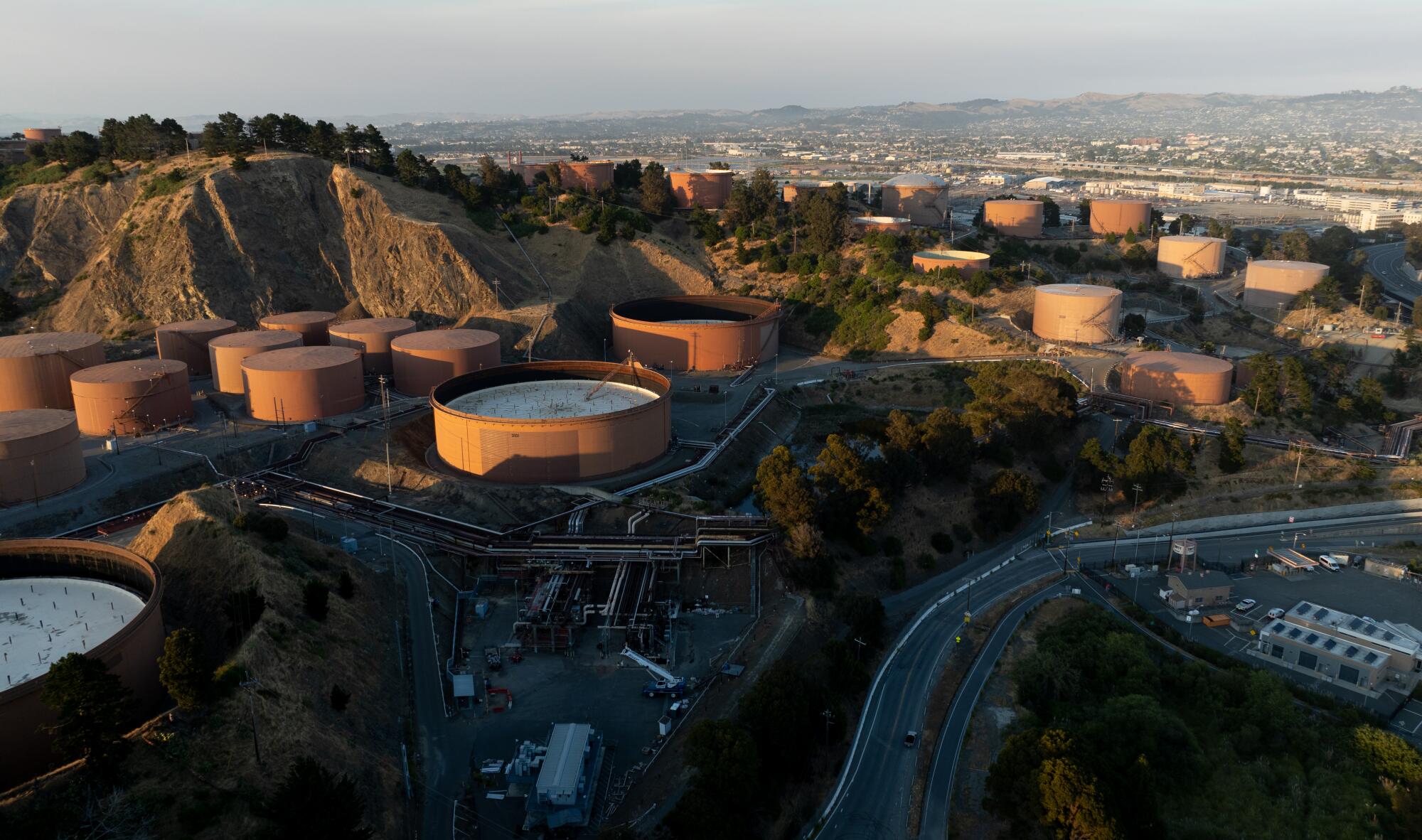
Is there more to the plan?
Yes. The law would allow the energy commission to “impose requirements” for minimum inventory not just for gasoline, but also for feedstocks and blending components used to create the final gasoline product. It also would require refineries to seek permission to reduce the mandated inventory level in times of high demand.
The commission could impose civil penalties up to $1 million a day for noncompliance. Refiners would be required to produce evidence that any production losses during maintenance won’t adversely affect the transportation fuel market in California.
What is the California Energy Commission?
The commission was created as a policy and planning agency in 1975 as a response to the 1970s energy crisis. For decades it’s served as the state’s go-to source for energy statistics and analysis. The state Assembly in recent years has granted the commission more investigatory and regulatory power, including state management of the electric vehicle public charging system. The Division of Petroleum Market Oversight, created in 2023, sits under the energy commission’s umbrella and is headed by a lawyer with deep experience in antitrust law.
In the race to decarbonize energy and fuel, the federal government is spending billions to create hydrogen economies. California will be one of several hydrogen hubs — here’s what that will mean.
Does the commission have any experience in oil refinery management?
It appears to be a work in progress. In an email, Siva Gunda, the commission’s vice chair, wrote, “The California Energy Commission has more than four decades of experience with the petroleum industry as part of our responsibilities under the Petroleum Industry Information Reporting Act. Our longstanding expertise has been further strengthened by new tools and transparency provided by the [2023] California Gas Price Gouging and Transparency Law. Contracts with outside experts further enhance our capabilities.”
The new legislation would create an expert committee with six members, who “shall either hold an academic position in, or demonstrate expertise of, economics or business operations of the transportation fuels market.” However, anyone who has worked in the oil and gas industry for the previous 12 months would be ineligible to sit on the commission.
What does the industry have to say?
“California politicians and regulators do not have the technical expertise to be micro-managing refinery maintenance and construction projects or setting fuel inventory mandates for the private sector,” said Susan Grissom, chief analyst for the trade group American Fuel & Petrochemical Manufacturers, via email. “In fact, this legislation would disqualify those with real-world experience from providing any of this direction. This type of intervention from Sacramento is willfully negligent and much more likely to compromise safety and harm the regional fuel supply chain than help.”
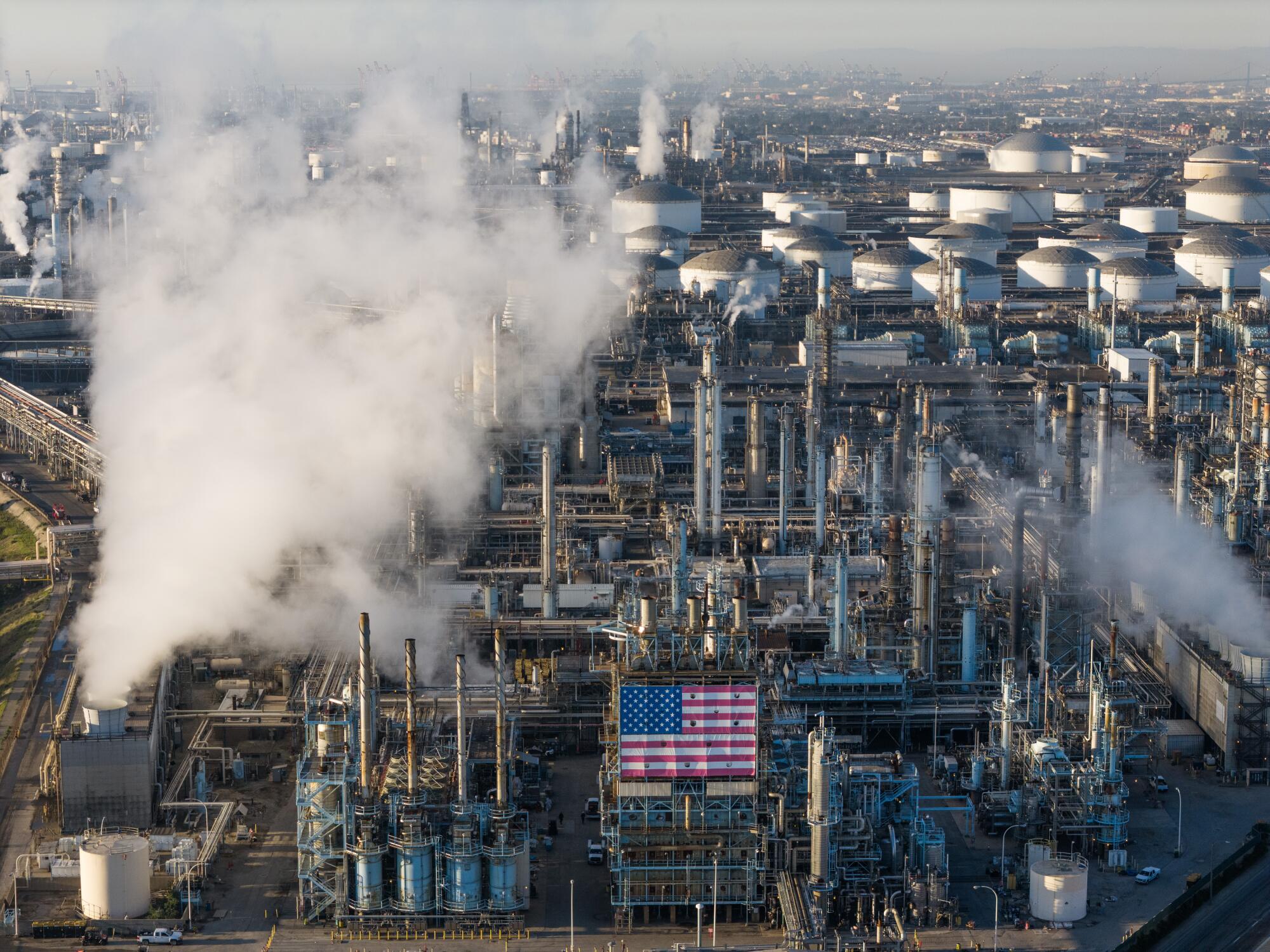
Any response to that from the governor?
Through a spokesman, Gov. Newsom and his senior climate advisor, Lauren Sanchez, declined to comment.
How about from industry experts?
Severin Borenstein, a UC Berkeley professor who heads the Energy Institute at Haas, said an inventory mandate could end up shaving price spikes a bit, but his research shows the main problem occurs closer to the retail level, where pricing remains opaque. The state has been looking into what Borenstein calls this “mystery surcharge” but has reached no conclusions.
The governors of Arizona and Nevada have come out against the plan. Why?
The vast majority of gasoline in Arizona and Nevada is pumped in by pipeline from California, New Mexico and Texas. Gov. Katie Hobbs of Arizona, a Democrat, and Nevada Gov. Joe Lombardo, a Republican, sent a joint letter to Newsom that reads in part: “Despite ongoing conversations about the root causes of rising fuel costs, it is evident that increased regulatory burdens on refiners and forced supply shortages will result in higher costs for consumers in all of our states. With both of our states reliant on California pipelines for significant amounts of our fuel, these looming cost increases and supply shortages are of tremendous concern to Arizona and Nevada.”
In a letter to the energy commission, the Arizona Petroleum Marketers Assn. said, “If refiners are required to prioritize California’s reserve requirements, it could lead to reduced fuel shipments to Arizona, creating supply shortages and potentially leading to fuel scarcity in our state. This could severely impact the availability of fuel in Arizona, causing widespread disruption.”
A positive long-term forecast for EV adoption adds a bit of glow to recent news of sales slowdowns that are a challenge to California’s climate goals.
Has any state tried inventory controls before?
No. California is setting the pace. In 2023, Australia created a gasoline reserve. Unlike the California plan, the reserve was created for geopolitical strategic reasons. The country imports more than 90% of its gasoline. Although private industry pays most of the reserve’s cost, Australia has pitched in with hundred of millions in government funding.
What about the U.S. Strategic Petroleum Reserve?
That’s a crude oil reserve, not gasoline. Created in response to the 1970s energy crisis, the reserve can store up to 700 million barrels of oil, most of it in underground salt caverns. Although it is intended as a cushion during war or other major emergency, presidents sometimes release reserve oil to soften retail gasoline prices.
The U.S. did maintain an emergency gasoline supply, the Northeast Gasoline Supply Reserve. It was created in 2014 in response to Hurricane Sandy, which severely damaged two refineries and caused 40 fuel terminals to shut down. But the reserve was recently depleted, with no plans for renewal.
When would the California gasoline reserve be created?
Not in time for any price spikes in the fall. If the government moves with unusual dispatch, it’s possible the rules and regulations could be in place by the end of next year.
Toward a more sustainable California
Get Boiling Point, our newsletter exploring climate change, energy and the environment, and become part of the conversation — and the solution.
You may occasionally receive promotional content from the Los Angeles Times.
